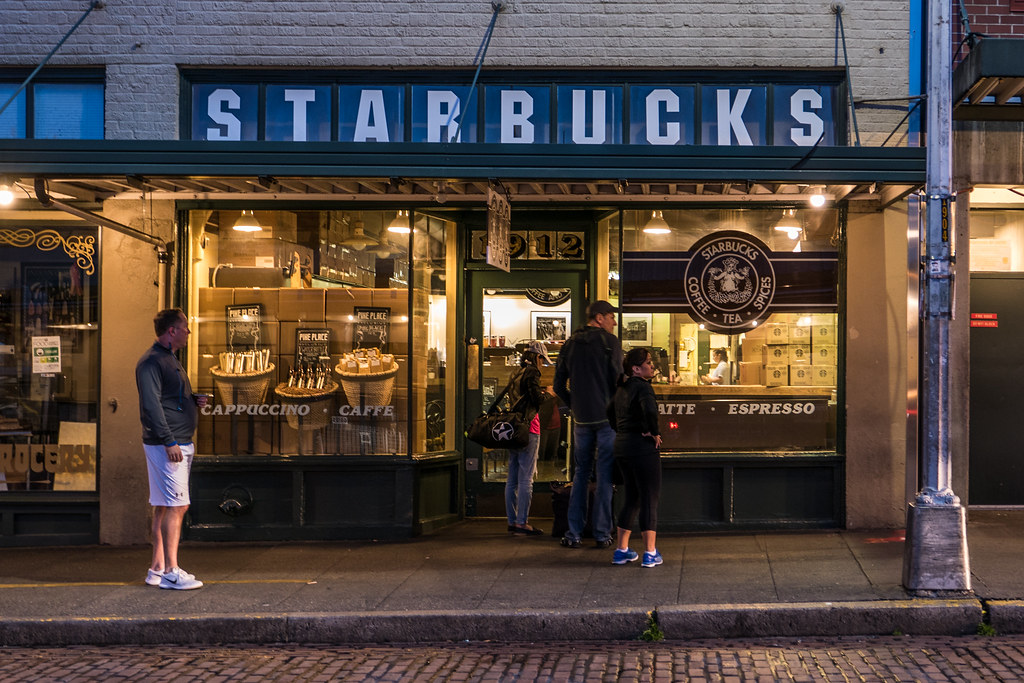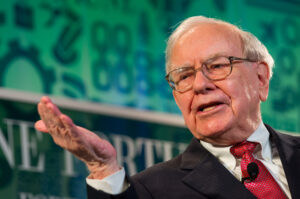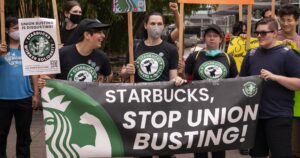by Jordan Zakarin
Starbucks is forcing out most of the staff at several of its flagship Seattle stores, a stunning shakeup that some workers believe is part of a new plan to undermine a historic union drive at the company.
In late May, Starbucks teased the creation of its first Heritage Market, a new concept that ties three stores together into one “elevated experience” aimed at tourists. In early June, workers from those three stores — at Pike Place Market, 1st and Pike, and Pike and University — were invited to interview for new jobs in the newly established triumvirate, but Starbucks also solicited applications from employees across western Washington.
On Tuesday night, managers at the company contacted applicants with updates and instructions. Only a few of the workers that were offered new jobs were sourced from the three stores that will comprise the new Heritage Market, and even fewer of them were known to be supporters of the unionization campaign being waged by Starbucks Workers United.
Workers suspect that Starbucks is piloting a new union-busting plan with the creation of the Heritage Market.
The location at 1st and Pike filed to unionize in early June, a few weeks after Starbucks made the initial announcement about the Heritage Market. An organizing effort had already been in the works before the Heritage Market concept was first introduced; workers there suspect that management had caught wind of the nascent campaign when managers began soliciting opinions from workers about how they felt about their job and the company.
The Heritage Market’s formation allows Starbucks to remove pro-union workers, an otherwise illegal maneuver, and work around a key ruling by the National Labor Relations Board stating that every store constitutes a single unit and is entitled to its own election.
Starbucks had sought to force entire regions, some with more than a dozen stores, to participate in one single election. “Our position since the beginning has been that all partners in a market or district deserve the right to vote on a decision that will impact them,” Starbucks spokesman Reggie Borges said in a statement to the New York Times.
More than 160 Starbucks stores have won their union elections since the NLRB’s ruling. Now, by combining three stores into one unit with a single staff, Starbucks appears to be trying to find a way around the NLRB’s decision. Typically, larger voting pools make it harder for workers to successfully organize.
“I believe [the Heritage Market] was a way for Starbucks to legally let people go,” says Katherine Van, who worked at the 1st and Pike store until Tuesday.” Our managers have been suspicious of some pro-union supporters and have experienced cut hours. By having to reapply to the Heritage Market and having to go through that interview process again, Starbucks could have them transferred to another store by saying they aren’t qualified to work at the Heritage Stores.”
Just one of the re-hires had participated in a one-day strike held at the 1st and Pike location last Saturday. No job offers went out to any of the workers that asked pointed questions of CEO Howard Schultz during a Q&A session the billionaire held at the Pike Place store last month.
Noah Debuhr, who worked at the Pike Place location, was one of the many workers who was not offered a new job at their old store. He says he felt confident after his interview, then was blindsided when he received the news from a manager.
“I asked him ‘what’s the timeframe here? How can I prepare?’” Debuhr relays. “And he said, ‘Oh, you don’t have two weeks’ notice — you have the next two days. You’ll be paid for Wednesday and Thursday.”
Van was also taken by surprise when she received the news.
“It was after we had closed the store and we were already home that we got a call from our store managers telling us that we did not need to come in and that we were being transferred to another store effective immediately,” she says. “It was so sudden, we did not at all know that that was our last shift.”
Those that did not get offered new jobs at their old stores were provided two options: They could request a transfer to another store, or they could resign. For many, a transfer would mean a longer commute and a lower base pay. To date, eight Seattle locations have successfully voted to unionize, while four others have applied for elections.
While initially encouraged to request a transfer to the unionized Roastery location, Debuhr said that he was later told that was no longer an option. At this point, both Debuhr and Mayo are looking for employment elsewhere.
“I know a lot of us are going to bounce, even the ones that may have made it into the store, that got rehired,” DeBuhr says. “We’re all just planning to abandon ship because we’re all a family.”
Schultz, the billionaire CEO who returned to the company in April, has made no secret of his thorough distaste for organized labor and has displayed a cutthroat desire to snuff out the unionization campaign.
He has repeatedly gone off-script at company events to berate the organizers at Starbucks Workers United, and last week, stated publicly that he had no intention of ever cooperating with union negotiators. In May, Starbucks shut down the Pike Place store for a speech and Q&A with Schultz, who offered choice words about organizing workers.
“He went on a 15-minute tangent about how unions are ruining this company and threatening its livelihood,” Debuhr says. “He was saying ‘foreign companies are getting between us and our partners and trying to separate us,’ and that ‘there shouldn’t be anyone between us and our partners — that’s how we guarantee that we’re giving the best quality service.”
Below is an email sent by Starbucks to workers at the three stores that have now been fused into the Heritage Market:




